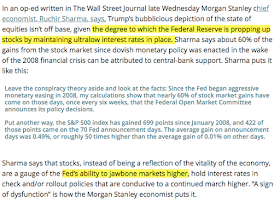Summary: Since February, US equities have risen more than 20%. Equities outside the US have risen 16%. A tailwind for this rally has been the bearish positioning of investors, with fund managers' cash in February at the highest level since 2001. Similarly, their equity allocations in February had only been lower in mid-2011 and mid-2012, periods which were notable lows for equity prices during this bull market.
Remarkably, allocations to cash in July were even higher than in February, and fund managers became underweight equities for the first time in 4 years. Investors dove into the safety of bonds, with allocations rising to a 3 1/2 year high in June and July.
Now in August, cash allocations are only slightly lower than in February and allocations to equities only slightly higher. Both are about one standard deviation away from their long term mean. Overall, fund managers' defensive positioning supports higher equity prices in the month(s) ahead.
Allocations to US equities had been near 8-year lows over the past year and half, during which the US has outperformed most of the world. That has now changed: exposure to the US is at a 20-month high. There is room for exposure to move higher, but the tailwind for the US due to excessive bearish sentiment has mostly passed. That's also the case for emerging markets which have been the best performing equity region so far in 2016. European equity markets, which have been the consensus overweight and also the world's worst performing region, are now the contrarian long trade within equities.
* * *
Among the various ways of measuring investor sentiment, the BAML survey of global fund managers is one of the better as the results reflect how managers are allocated in various asset classes. These managers oversee a combined $600b in assets.
The data should be viewed mostly from a contrarian perspective; that is, when equities fall in price, allocations to cash go higher and allocations to equities go lower as investors become bearish, setting up a buy signal. When prices rise, the opposite occurs, setting up a sell signal. We did a recap of this pattern in December 2014 (
post).
Let's review the highlights from the past month.
Cash: Fund managers cash levels at the equity low in February were 5.6%, the highest since the post-9/11 panic in November 2001 and lower than at any time during the 2008-09 bear market. This was an extreme that has normally been very bullish for equities. Remarkably, with the SPX 20% higher, cash in July was even higher (5.8%) and at the highest level in 14 years (since November 2001). That has moderated only slightly in August, falling to 5.4%. High cash levels are supportive of further gains in equities in the month(s) ahead (enlarge any image by clicking on it).
































